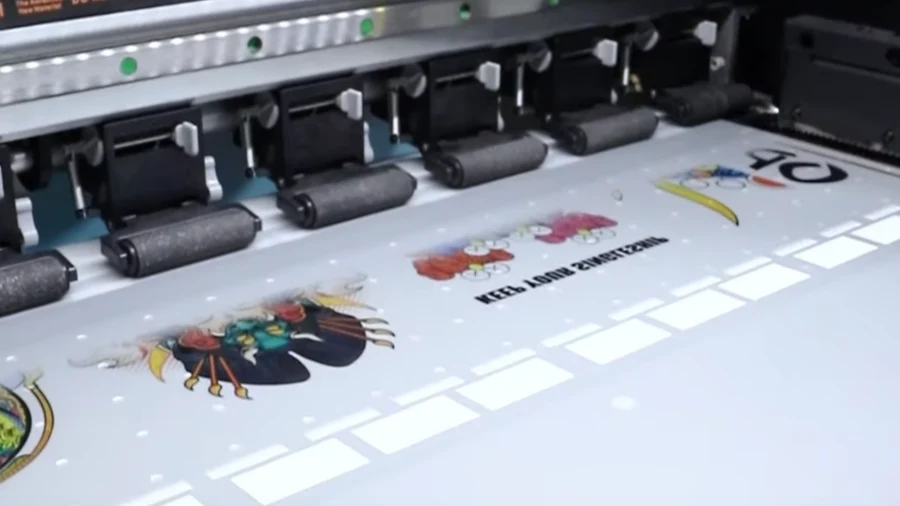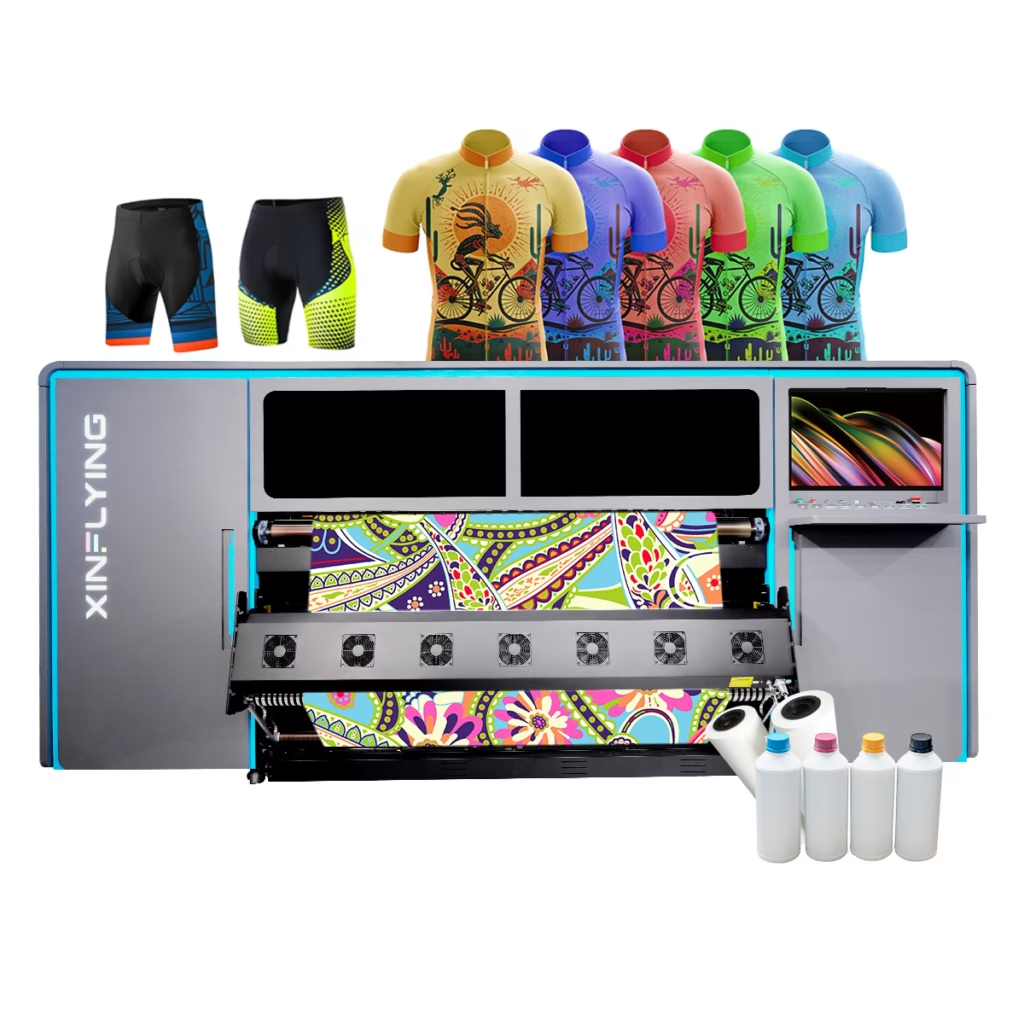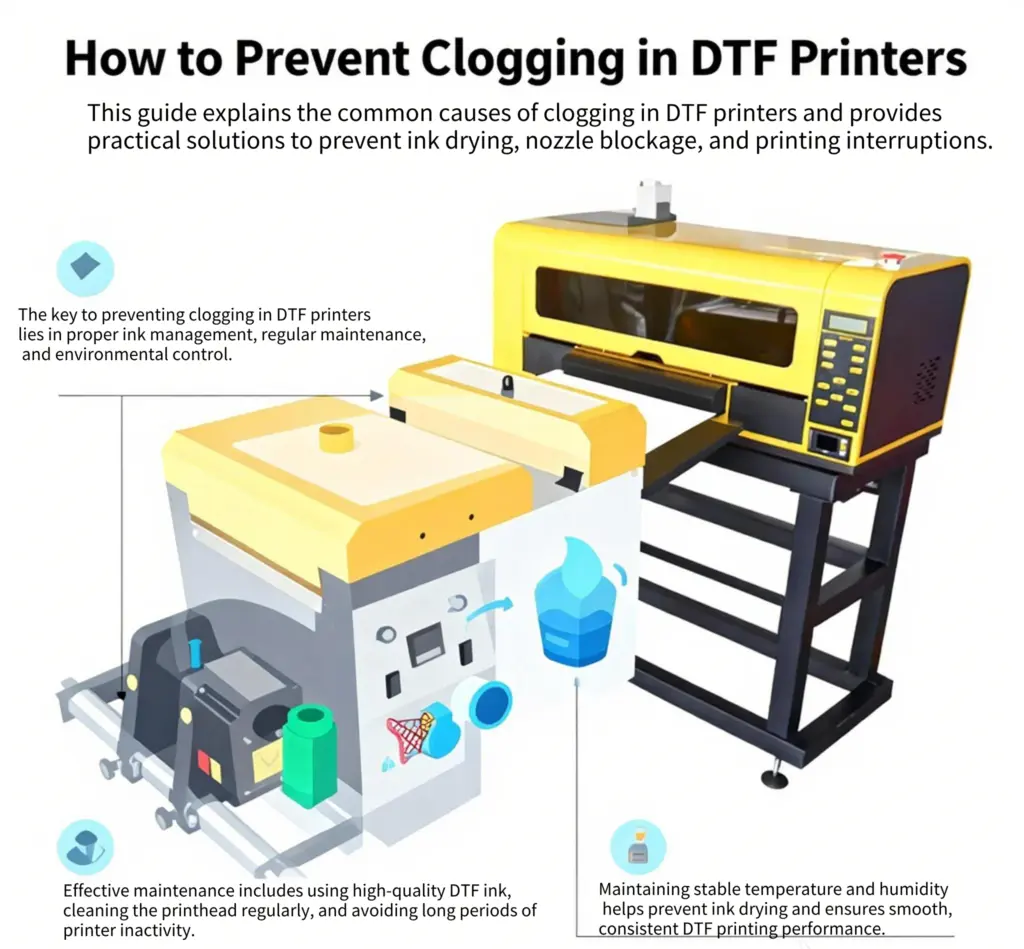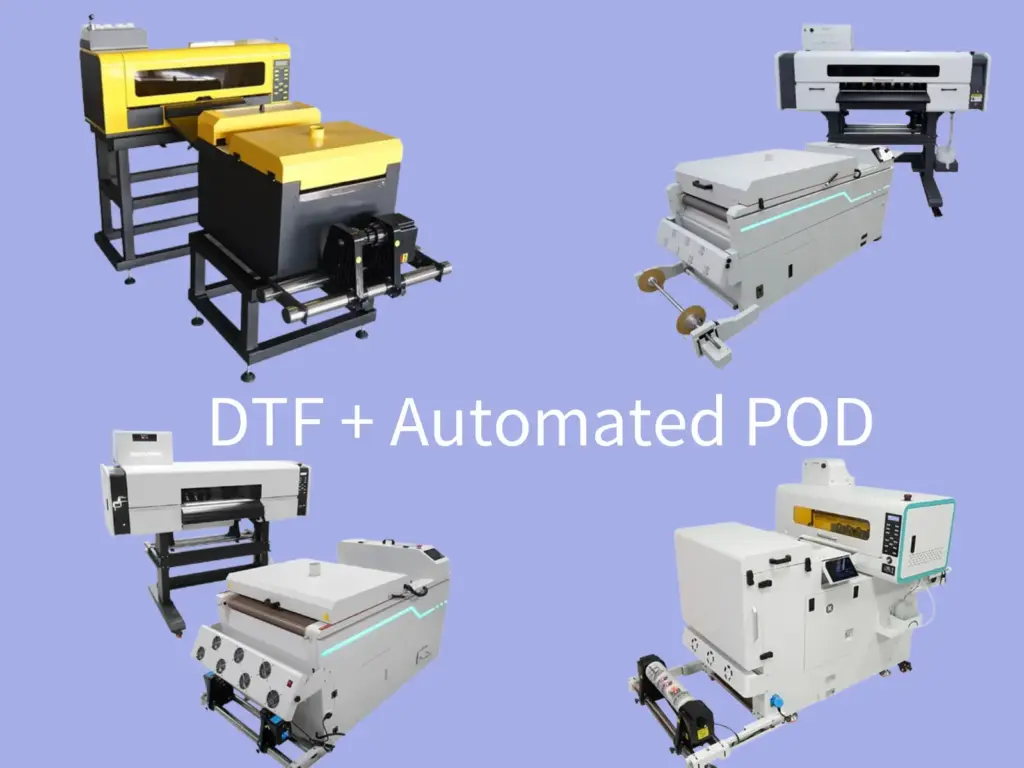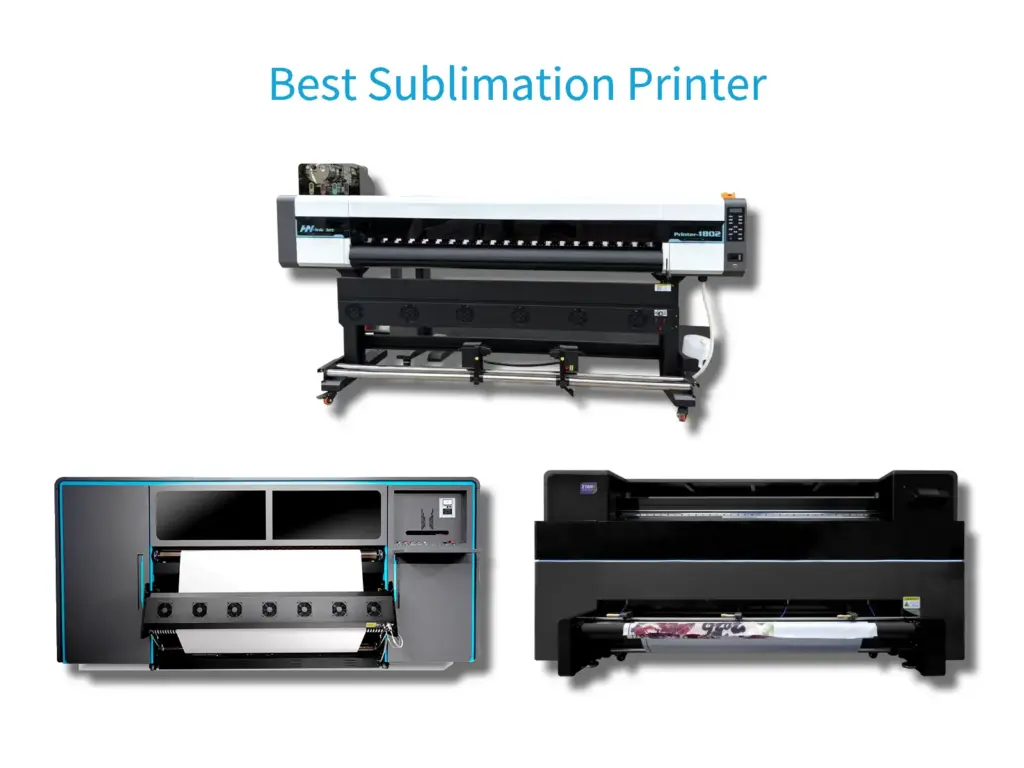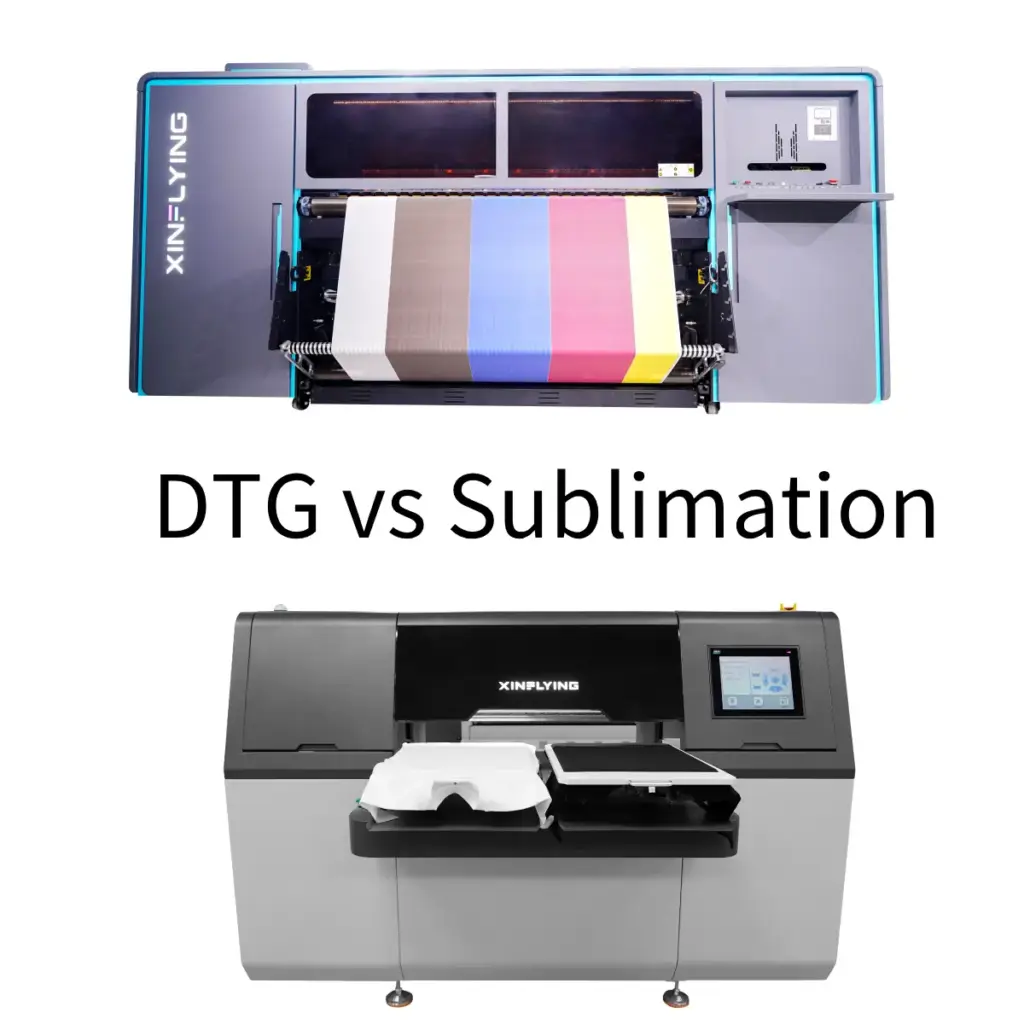ดังนั้น, คุณสงสัยเกี่ยวกับการพิมพ์ DTF และสิ่งที่ต้องดำเนินการในการเริ่มต้น? คุณมาถูกที่แล้ว! ตรงสู่ภาพยนตร์ (ดีทีเอฟ) การพิมพ์ คือผู้เปลี่ยนเกมในโลกแห่งการพิมพ์แบบกำหนดเอง, มอบความอเนกประสงค์และผลลัพธ์ที่น่าทึ่งบนเนื้อผ้าหลากหลายชนิด. แต่สิ่งที่คุณต้องการจริงๆ เพื่อเจาะลึกกระบวนการพิมพ์ DTF? มาทำลายมันทีละขั้นตอน.
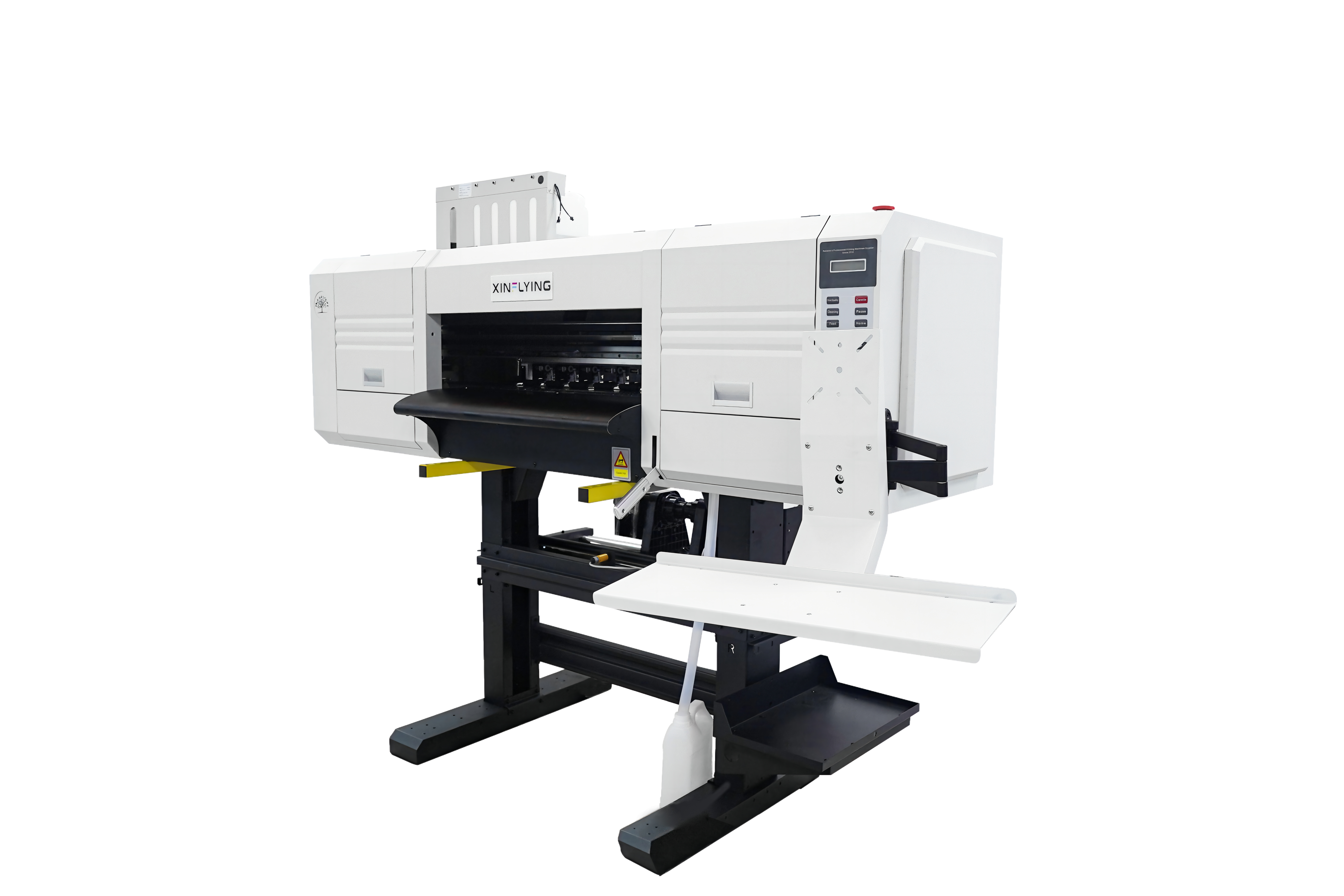
เครื่องพิมพ์ดีทีเอฟ
สิ่งแรกก่อน, คุณต้องการ เครื่องพิมพ์ DTF คุณภาพสูง. เครื่องพิมพ์เฉพาะทางนี้ได้รับการออกแบบมาเพื่อรองรับความต้องการเฉพาะของการพิมพ์ DTF, เช่นการพิมพ์ลงบนแผ่นฟิล์มแทนผ้าแบบเดิมๆ. เมื่อเลือกเครื่องพิมพ์ DTF, มองหาคุณสมบัติเช่นความละเอียดสูง, เอาต์พุตสีที่สดใส, และเข้ากันได้กับหมึกประเภทต่างๆ. เครื่องพิมพ์ที่ดีคือรากฐานสำคัญของการผลิตงานที่คมชัด, ภาพรายละเอียดที่ปรากฏ.
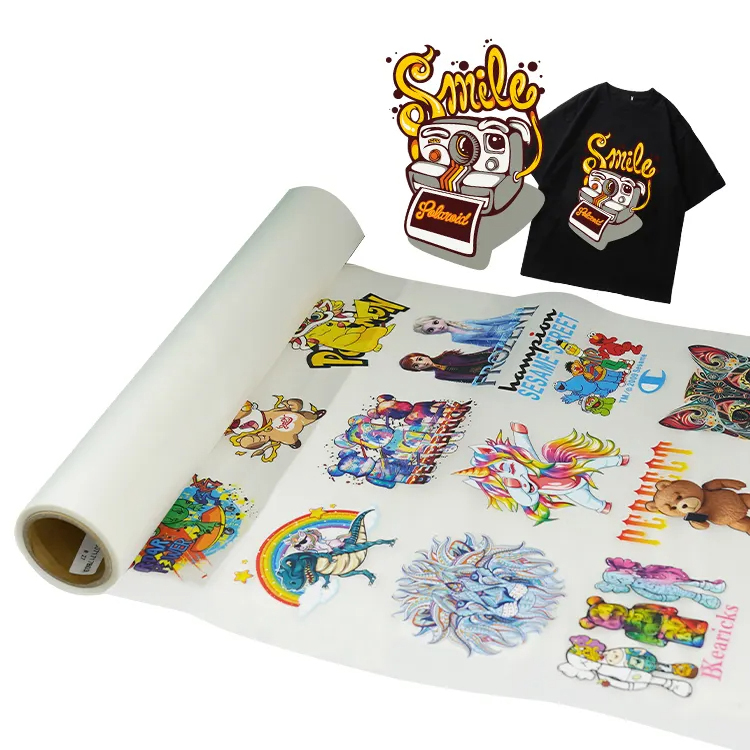
ฟิล์มดีทีเอฟ
ถัดมาเป็น ฟิล์มดีทีเอฟ, องค์ประกอบสำคัญในกระบวนการพิมพ์นี้. ภาพยนตร์เรื่องนี้ทำหน้าที่เป็นสื่อกลางสำหรับการออกแบบของคุณ, ซึ่งจะถูกถ่ายทอดลงบนผ้าในที่สุด. ตรวจสอบให้แน่ใจว่าใช้ฟิล์ม DTF คุณภาพสูงที่สามารถรองรับความร้อนและความดันของกระบวนการถ่ายโอนได้โดยไม่ทำให้คุณภาพลดลง. เพื่อให้แน่ใจว่าการออกแบบของคุณยังคงคมชัดเมื่อนำไปใช้กับผลิตภัณฑ์ขั้นสุดท้าย.

หมึกดีทีเอฟ
หมึกคือจุดที่ความมหัศจรรย์เกิดขึ้น. หมึกดีทีเอฟ เป็นสูตรพิเศษให้ติดฟิล์มแล้วติดผ้า. คุณจะต้องมีชุดหมึก CMYK, และมักเป็นหมึกสีขาว, เพื่อสร้างความมีชีวิตชีวา, งานพิมพ์สีเต็มรูปแบบ. คุณภาพของหมึกสามารถสร้างหรือทำลายการออกแบบของคุณได้, ดังนั้นลงทุนในแบรนด์ที่มีชื่อเสียงซึ่งมีความสม่ำเสมอและความทนทาน.
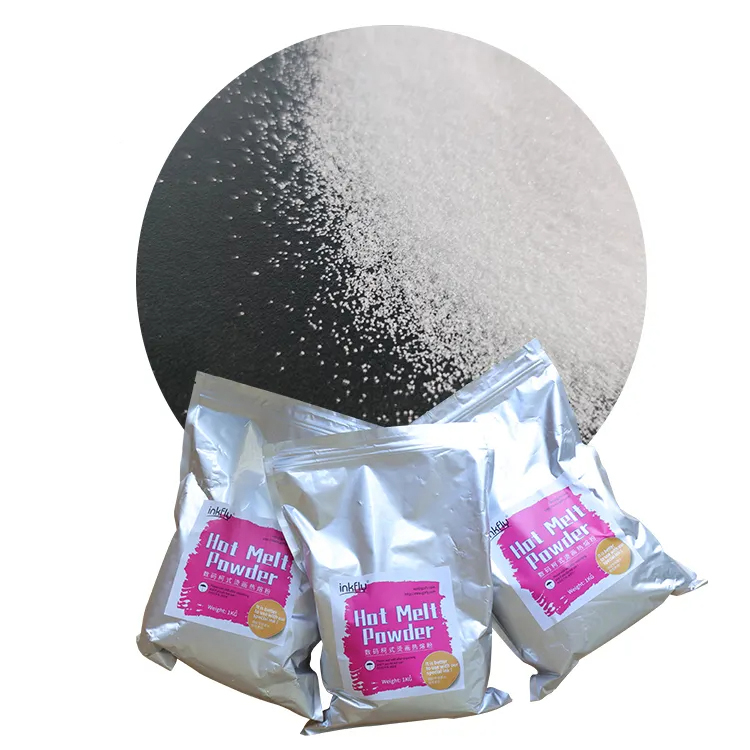
ผงร้อนละลาย DTF
DTF ผงละลายร้อน เป็นซอสสูตรลับที่ช่วยให้งานพิมพ์ของคุณติดเนื้อผ้า. หลังจากพิมพ์การออกแบบของคุณลงบนแผ่นฟิล์ม, คุณโรยผงนี้ลงบนหมึกเปียก. ผง DTF จะละลายในระหว่างกระบวนการรีดความร้อน, ผูกหมึกเข้ากับผ้า. จำเป็นต้องใช้ผงคุณภาพสูงเพื่อหลีกเลี่ยงปัญหาต่างๆ เช่น การยึดเกาะไม่ดีหรือพื้นผิวหยาบในการพิมพ์ขั้นสุดท้ายของคุณ.
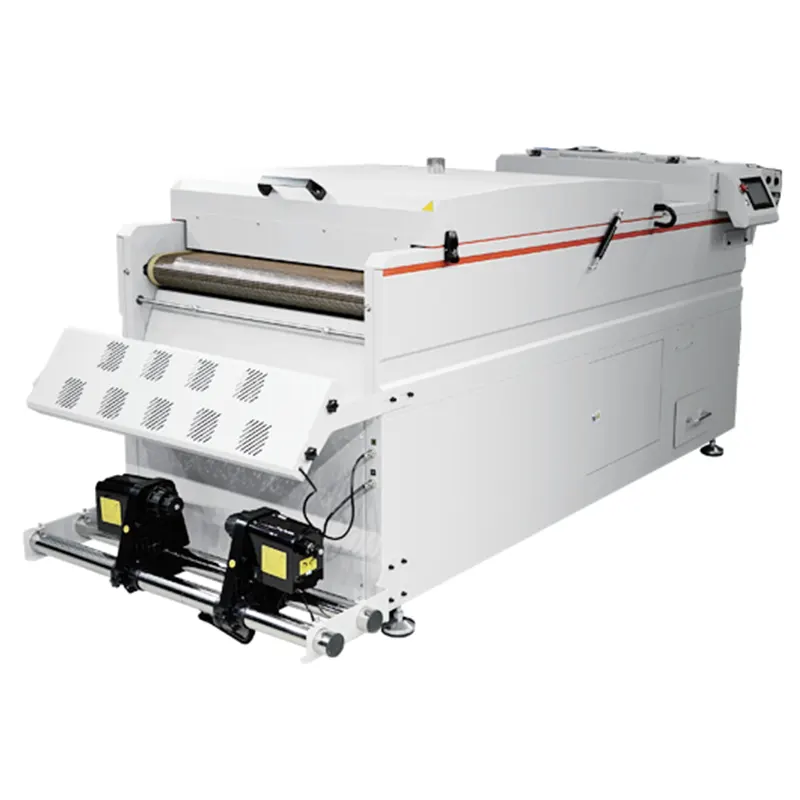
เครื่องปั่นผง DTF
สำหรับผู้ที่ต้องการขยายการดำเนินงาน, เครื่องปั่นผง DTF เป็นสิ่งที่ต้องมี. เครื่องนี้ทำให้กระบวนการทาและสลัดผงส่วนเกินออกโดยอัตโนมัติ, รับประกันความครอบคลุมและประหยัดเวลา. เป็นการลงทุนที่คุ้มค่าหากคุณต้องจัดการกับงานพิมพ์จำนวนมาก และต้องการรักษาความสม่ำเสมอและประสิทธิภาพ.
เครื่องกดความร้อน
เครื่องกดความร้อนคือชิ้นส่วนสุดท้ายของปริศนา. หลังจากการออกแบบของคุณถูกพิมพ์บนฟิล์มและเคลือบด้วยผงละลายร้อน, คุณถ่ายโอนไปยังผ้าโดยใช้เครื่องรีดความร้อน. เครื่องใช้ความร้อนและแรงกดที่จำเป็นเพื่อยึดหมึกและผงเข้ากับผ้าอย่างถาวร. เลือกเครื่องรีดความร้อนที่ช่วยให้ควบคุมอุณหภูมิและแรงดันได้อย่างแม่นยำเพื่อให้ได้ผลลัพธ์ที่ดีที่สุด.
ซอฟต์แวร์ RIP
ฉีก (ตัวประมวลผลภาพแรสเตอร์) ซอฟต์แวร์เป็นสิ่งจำเป็นสำหรับการจัดการและเพิ่มประสิทธิภาพไฟล์การพิมพ์ของคุณ. ซอฟต์แวร์นี้แปลการออกแบบของคุณเป็นรูปแบบที่เครื่องพิมพ์สามารถเข้าใจได้, ช่วยให้มั่นใจได้ถึงการสร้างสีที่แม่นยำและการใช้หมึกอย่างมีประสิทธิภาพ. นอกจากนี้ยังช่วยให้คุณปรับการตั้งค่า เช่น โปรไฟล์สีและคุณภาพการพิมพ์, ให้คุณควบคุมผลลัพธ์สุดท้ายได้ดียิ่งขึ้น.

คำแนะนำทีละขั้นตอนสำหรับกระบวนการพิมพ์ DTF
ตอนนี้เรามีส่วนประกอบทั้งหมดแล้ว, มาดูกระบวนการ DTF ทีละขั้นตอนกันดีกว่า:
- การสร้างการออกแบบ: เริ่มต้นด้วยการออกแบบงานศิลปะของคุณโดยใช้ซอฟต์แวร์ออกแบบกราฟิก. ตรวจสอบให้แน่ใจว่าการออกแบบของคุณพอดีกับขนาดของฟิล์ม DTF ของคุณ.
- พิมพ์บนแผ่นฟิล์ม: ใส่เครื่องพิมพ์ DTF คุณภาพสูงของคุณด้วยฟิล์ม DTF และพิมพ์งานออกแบบของคุณ. ตรวจสอบให้แน่ใจว่าได้รวมชั้นหมึกสีขาวไว้ด้วยหากการออกแบบของคุณต้องการ.
- ใช้ผงละลายร้อน: ในขณะที่หมึกยังเปียกอยู่, โรยผงร้อนละลาย DTF ให้ทั่วการออกแบบ. ใช้เครื่องเขย่าผง DTF เพื่อการปกปิดที่สม่ำเสมอ หากมี.
- รักษาผง: เปิดเครื่องรีดร้อนที่อุณหภูมิประมาณ 160°C (320° F) และเลื่อนไปเหนือฟิล์มเพื่อรักษาแป้งโดยไม่ต้องกด. เพื่อให้แน่ใจว่าผงจะละลายและยึดติดกับหมึก.
- การถ่ายเทความร้อน: วางฟิล์มที่บ่มแล้วลงบนผ้าของคุณ, แล้วกดด้วยเครื่องรีดร้อนที่อุณหภูมิประมาณ 160°C (320° F) สำหรับ 15-20 ไม่กี่วินาที. ใช้แรงกดเพื่อให้แน่ใจว่ามีการยึดเกาะที่เหมาะสม.
- ลอกและเสร็จสิ้น: ปล่อยให้ผ้าเย็นลง, แล้วลอกฟิล์มออกเบาๆ. ตอนนี้การออกแบบของคุณควรถูกถ่ายทอดลงบนผ้าอย่างสวยงาม.
บทสรุป
การกระโดดเข้าสู่โลกแห่งการพิมพ์ DTF อาจดูน่าหวาดหวั่นในตอนแรก, แต่ด้วยอุปกรณ์ที่เหมาะสมและการฝึกฝนเล็กน้อย, คุณจะผลิตงานพิมพ์คุณภาพระดับมืออาชีพได้ในเวลาอันรวดเร็ว. จากเครื่องพิมพ์ DTF คุณภาพสูงไปจนถึงเครื่องปั่นผง DTF ที่สำคัญทั้งหมด, แต่ละองค์ประกอบมีบทบาทสำคัญในกระบวนการพิมพ์ dtf. ขอให้มีความสุขในการพิมพ์!
คำถามที่พบบ่อยเกี่ยวกับการพิมพ์ DTF
1. ฉันสามารถใช้ผ้าชนิดใดกับการพิมพ์ DTF?
การพิมพ์ DTF มีความหลากหลายสูงและใช้ได้กับผ้าหลากหลายประเภท, รวมถึงผ้าฝ้าย, โพลีเอสเตอร์, และผสมผสาน.
2. เครื่องปั่นผง DTF ช่วยปรับปรุงกระบวนการพิมพ์ได้อย่างไร?
เครื่องปั่นผง DTF ช่วยให้มั่นใจได้ถึงการใช้ผงละลายร้อนอย่างสม่ำเสมอ, ประหยัดเวลาและเพิ่มความสม่ำเสมอในการพิมพ์ของคุณ.
3. ฉันสามารถใช้หมึกธรรมดากับเครื่องพิมพ์ DTF ของฉันได้หรือไม่?
เลขที่, คุณต้องใช้หมึก DTF แบบพิเศษที่ออกแบบมาให้ทำงานกับฟิล์มและยึดติดกับเนื้อผ้าอย่างเหมาะสม.
4. วัตถุประสงค์ของซอฟต์แวร์ RIP ในการพิมพ์ DTF คืออะไร?
ซอฟต์แวร์ RIP ปรับไฟล์การพิมพ์ของคุณให้เหมาะสม, รับประกันการสร้างสีที่แม่นยำและการใช้หมึกอย่างมีประสิทธิภาพ, นำไปสู่งานพิมพ์ที่มีคุณภาพสูงขึ้น.
5. การพิมพ์ DTF เหมาะสำหรับธุรกิจขนาดเล็กหรือไม่?
อย่างแน่นอน! การพิมพ์ DTF เหมาะสำหรับธุรกิจขนาดเล็กถึงขนาดกลางเนื่องจากมีความสามารถรอบด้าน, ใช้งานง่าย, และความสามารถในการผลิตงานพิมพ์คุณภาพสูงตามความต้องการ.

